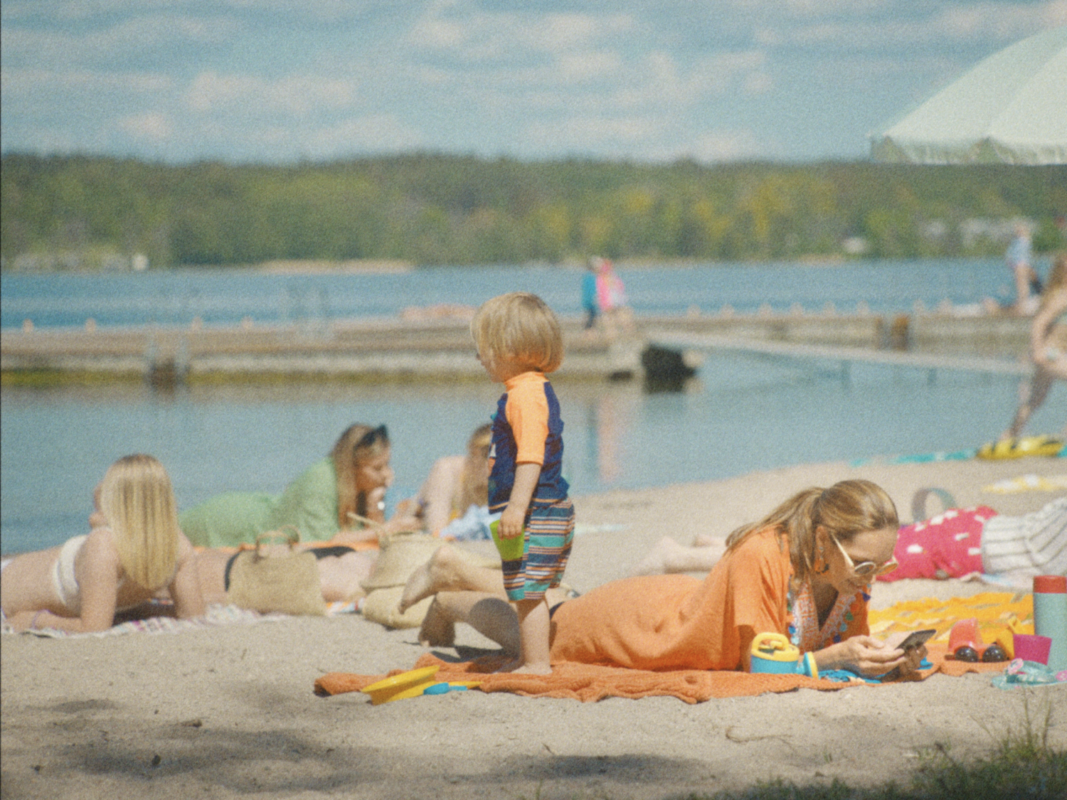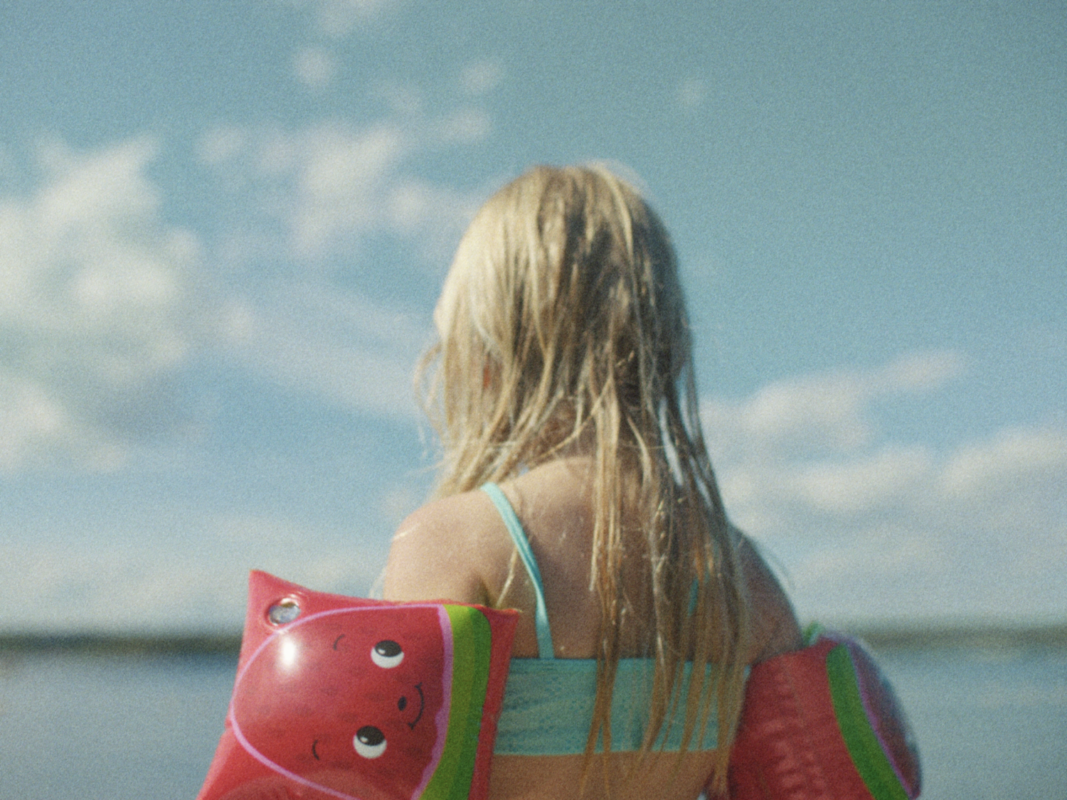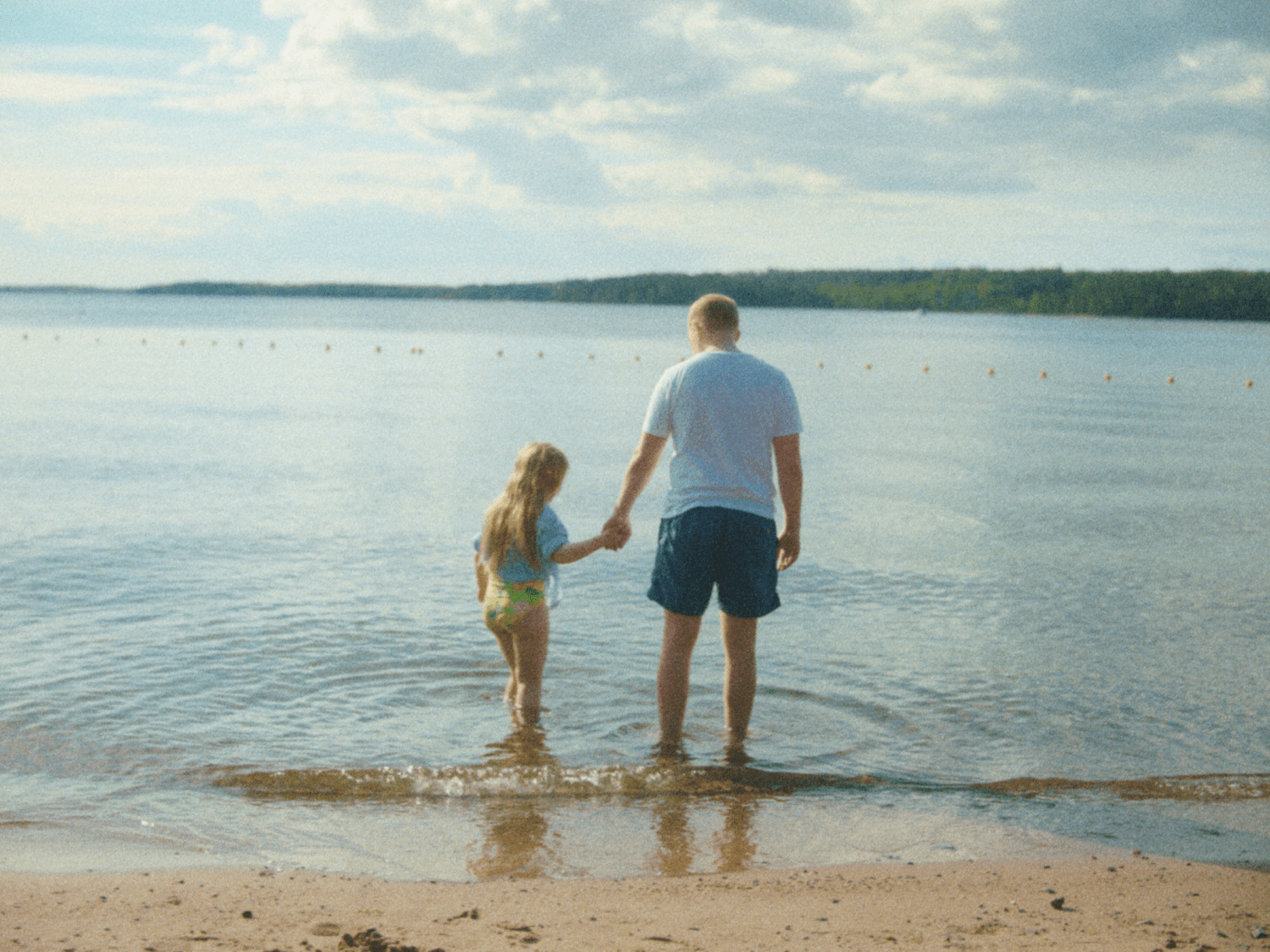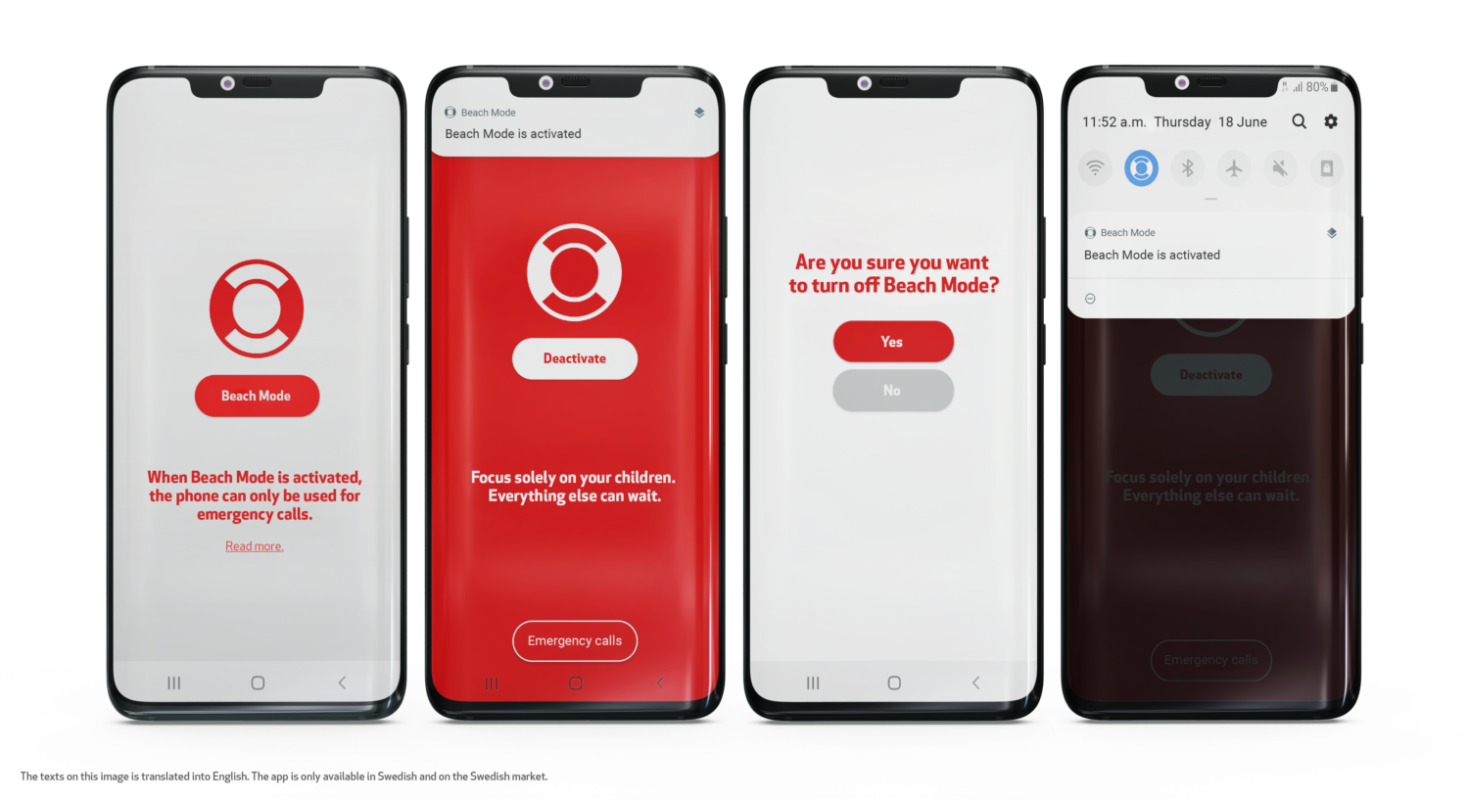n Sweden drowning is the most common fatal accident among children between the ages of one and six and is often the result of lacking parental supervision. A new survey from Trygg-Hansa found that more than one in four parents (27%) had lost sight of bathing children. Trygg-Hansa is now launching the Badläge (Beach Mode) initiative, aimed at reducing the number of near-drowning accidents and to prevent children from drowning. Through Badläge, Trygg-Hansa wants to encourage parents to keep an eye on their children on the beach by turning Badläge on, both mentally and in their mobile phone. When Trygg-Hansa’s new Badläge app is activated, the phone can only be used for emergency calls and it becomes easier to focus on the children.
Summer has begun and beaches are packed with bathing families. But summer and swimming also mean that the drowning season has started, particularly on sunny days when temperatures rise both on land and in the water. Many parents admit that it is difficult to supervise children on beaches and one in three parents (30%) is fairly or very concerned that their children could be harmed when they are in the water.
Mobile phones – a lethal distraction on the beach
Swedes spend an average of 3.5 hours using mobile phones every day, and scrolling on a mobile phone on the beach could end in tragedy. It is easy to become distracted, if only for a moment, when your phone demands your attention. Drowning can be quick and is often silent. The survey found that only four in ten parents (38%) never use their mobile phone when they are out bathing with children.
“It is important to put your phone away when you are bathing with children. I urge everyone to turn Beach Mode on, not least mentally. When Beach Mode is activated, the phone is silenced, and you can only use it for emergency calls. It makes it easier for parents to stay vigilant and feel confident that their children are safe in the water,” says Alexandra Gahnström, Children’s Insurance Specialist at Trygg-Hansa.
Your paperback, beach neighbour and phone are all lethal distractions that can easily distract you from your children, who can quickly move out of sight. It is recommended that you bathe with your children and use floatation devices whenever necessary. Small children should always stay within an arm’s length. Every second is crucial in avoiding serious injury to your child, or at worst dying in a drowning accident.
“Brain damage from a lack of oxygen occurs after only three or four minutes under water. Many people do not understand how quickly events can move if there is a lack of supervision and that children may actually be in mortal danger. At the beach, parents must oversee smaller children all the time,” says Andreas Claesson, lead researcher at Karolinska Institutet’s Centre for Resuscitation Science and Chairman of the Swedish Resuscitation Council (HLR-rådet).
Almost one in four (24%) parents think it is fine if their children bathe or swim unaccompanied by an adult. Moreover, one in five (21%) feels safe when a child is bathing if they can swim.
“The swimming ability of a child does not mean they are safe from drowning. As a parent, you must always decide whether your children who can swim can keep to the bathing rules you have agreed on,” concludes Alexandra Gahnström.
At Trygghansa.se/badlage you can find films and advice in Swedish to parents about how you can best supervise your children and what to avoid to ensure the safety of your child in the water.
Tips from the experts to parents for a safer summer for children on the beach:
- Focus solely on your children. Put away your phone, tablet or book.
- Small children and children who cannot swim must always be within arm’s reach of an adult, so you can reach them immediately should anything happen.
- If there are several adults, decide who is responsible for supervising the children. Never assume that another adult is watching over the children.
- Do not allow older children to supervise younger ones, an adult is needed as children can easily be distracted and do other things.
- Floatation toys and water wings offer a false sense of security and can be blown out away from the beach. Remain vigilant and stay close.
- Take small children and children who cannot swim with you if you are “only” going to buy an ice cream or use the toilet facilities.
- Talk to and teach your children how to stay safe when bathing.
- You can take photographs of your children on the beach if you can stay vigilant – but if you plan to post the photos on social media, you should do this later when the children have finished bathing.
- Supervision is just as important at your own swimming pool as it is at the beach or public swimming baths. For example, if you are going to the kitchen to make coffee, take small children and children who cannot swim with you.
- Discover the joy of bathing together with your children – this allows you to maintain constant supervision and proximity.
Results of the survey:
How often do you use your mobile phone (scrolling/talking/writing, etc.) when you are bathing with your children?
- Always: 0%
- Often: 1%
- Sometimes: 16%
- Rarely: 45%
- Never: 38%
- Do not know: 1%
Have you ever lost sight of your child when bathing?
- Yes, several times: 11%
- Yes, once 16%
- No, never: 68%
- Do not know: 5%
Were you concerned when you lost sight of your child when bathing?
- Yes: 71%
- No: 28%
When do you believe, if any, that it is fine for your child to bathe alone or unaccompanied by an adult?
- Always: 1%
- When my child is bathing with a friend of the same age: 5%
- When my child is with a teenager: 18%
- Other occasions: 5%
- Never: 73%
How concerned are you that your child could be harmed when you are bathing?
- Very concerned: 4%
- Fairly concerned: 26%
- Not particularly concerned: 59%
- Not concerned at all: 10%
Which of the following makes you feel most secure when you are bathing with your child?
- When I am constantly supervising: 42%
- When there are several adults who help to supervise: 22%
- When my child can swim: 21%
- When my child has water wings: 6%
- When older siblings and children are supervising: 2%
- When my child has a life jacket: 1%
- None of the above: 0%
- I am not concerned when I am bathing with my child: 6%
- Do not know: 0%
*About the survey:The survey was conducted by Novus on behalf of Trygg-Hansa. The purpose of the survey was to study the bathing habits of parents with their children. The survey used online interviews with individuals recruited at random from Novus’s nationwide Sweden panel. A total of 1,045 interviews were conducted between 26 and 31 May 2020. The target group was parents with children aged between two and nine. The participation rate was 67%.
**Badläge (Beach Mode) is available for Android devices on Google Play on the Swedish market. Unlike flight mode, Badlägeblocks apps when activated. It also still allows Swedish emergency calls in case of an emergency. When Badläge is deactivated, the phone works normally and you can see missed calls, messages and notifications.





